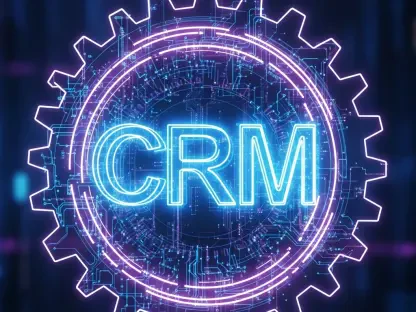Welcome to an insightful conversation with Anastasia Braitsik, a global leader in SEO, content marketing, and data analytics. With her extensive expertise in digital marketing, Anastasia has a deep understanding of optimizing Google Ads campaigns and navigating the complexities of match type performance. Today, we dive into the findings of a recent Adalysis study on Google Ads match types, exploring how broad, exact, and phrase matches impact revenue, efficiency, and campaign strategies. From surprising revenue boosts with broad match to the consistent reliability of exact match, and the challenges with phrase match, Anastasia breaks down what advertisers need to know to maximize their return on ad spend in today’s dynamic landscape.
Can you walk us through the key insights from the Adalysis study on Google Ads match types and what surprised you the most?
Absolutely, Sophia. The Adalysis study analyzed over 16,000 search campaigns and revealed some fascinating trends. What stood out was how broad match, often seen as a risky choice, actually delivered higher revenue per conversion in certain scenarios. Exact match, on the other hand, remained the gold standard for efficiency with better click-through rates, conversion rates, and return on ad spend, though it lagged in impressions. Phrase match, unfortunately, often underperformed on cost per acquisition and ROAS. The biggest surprise for me was broad match’s potential—despite its higher costs, it showed that with the right setup, it can drive significant revenue, which challenges some long-held assumptions in the industry.
Why do you think exact match consistently outperforms broad and phrase match in terms of efficiency metrics like CTR and ROAS?
Exact match excels because it targets users with very specific intent. When a user’s search query matches the keyword precisely, the ad is more relevant, leading to higher click-through and conversion rates. This precision also means advertisers aren’t wasting budget on irrelevant clicks, which boosts ROAS. It’s like speaking directly to someone who’s already looking for exactly what you offer. The trade-off, of course, is lower impression volume, but the quality of those interactions often makes up for it in terms of efficiency.
Is there a potential downside to leaning too heavily on exact match for a campaign?
Definitely. While exact match is efficient, its limited impression volume can restrict overall reach. If you’re overly reliant on it, you might miss out on potential customers who are searching with slightly varied terms or related queries. This can cap your growth, especially for newer campaigns or businesses looking to expand their audience. It’s often best used as a foundation, but you need to complement it with other match types to capture broader opportunities.
Let’s shift to broad match. The study highlights its power when paired with Google’s automated bidding signals. Can you explain how these signals give broad match an advantage?
Broad match casts a wide net, allowing ads to show for a range of related searches, and Google’s automated bidding signals—like those in Max Conversion Value—help optimize for outcomes by leveraging machine learning. These signals analyze vast amounts of data, including user behavior and context, to adjust bids in real time for clicks most likely to convert. This gives broad match an edge in uncovering unexpected, high-value opportunities that exact or phrase match might miss, especially in terms of driving revenue per conversion.
Despite its strengths, why does broad match often come with a higher cost per acquisition?
The higher CPA with broad match comes down to its expansive nature. Since it triggers ads for a wider variety of searches, including less relevant ones, you’re bound to get some clicks that don’t convert as well. This inefficiency increases costs compared to the precision of exact match. Essentially, you’re paying for the volume and the potential to discover new converting terms, but not every click will be a perfect fit, which drives up the average CPA.
Moving to phrase match, often called the ‘problem child’ in the study. Why do you think it struggles to compete with broad and exact match on metrics like CPA and ROAS?
Phrase match falls into an awkward middle ground. It’s not as tightly controlled as exact match, so it can trigger for less relevant variations, and it doesn’t benefit from the robust bidding signals that broad match gets from Google’s algorithms. This means it often lacks the precision for high efficiency and the scale for big revenue wins. Without those strong signals to optimize bids effectively, phrase match can lead to higher CPAs and lower ROAS, making it less appealing in many scenarios.
Are there specific situations where phrase match can still be a valuable tool for advertisers?
Yes, phrase match can shine in larger accounts with substantial data volume. When you have enough historical data, it can stabilize and perform better, especially under bidding strategies like Target ROAS. It’s also useful for capturing queries that are close to your target but not exact, without going as wide as broad match. For example, in campaigns where you’re testing new keywords or targeting niche variations, phrase match can help bridge the gap between precision and reach.
The study also discusses how bidding strategies impact match type performance. How does choosing a strategy like Max Conversion Value or Target ROAS influence which match type works best?
Bidding strategies play a huge role because they align the match type’s strengths with campaign goals. Max Conversion Value, for instance, works well with broad match in ecommerce because it prioritizes higher cart values and leverages Google’s signals to find big spenders, even if the CPA is higher. Target ROAS, on the other hand, favors exact match since it focuses on efficiency and hitting specific return goals. The strategy essentially shapes how aggressively or conservatively the match type operates, impacting both volume and cost metrics.
Looking ahead, what’s your forecast for the future of match types in Google Ads, especially with speculation about Google potentially phasing them out?
That’s a great question, Sophia. I think match types will evolve rather than disappear entirely, as Google continues to push automation and machine learning. We’re already seeing broad match gain traction with smarter bidding signals, and I expect Google to further integrate these capabilities, possibly simplifying match types into more automated, intent-based targeting. However, advertisers will still need control over precision versus reach, so some form of customization will likely remain. My forecast is a shift toward a hybrid model where match types are less rigid, but the core principles of targeting intent—whether exact or broad—will persist as critical strategies for success.









